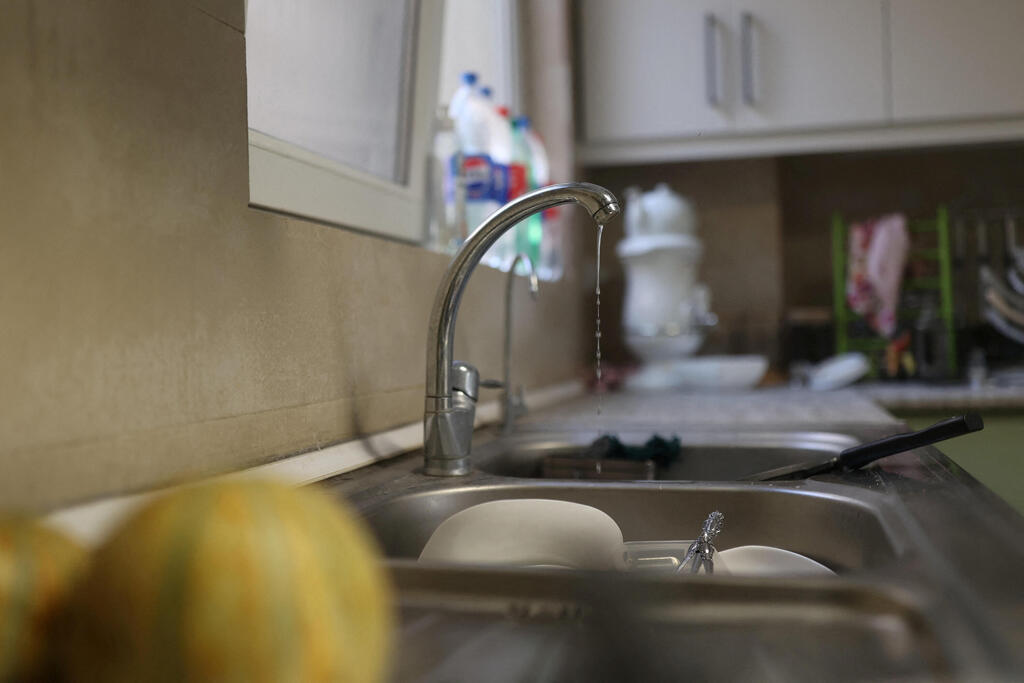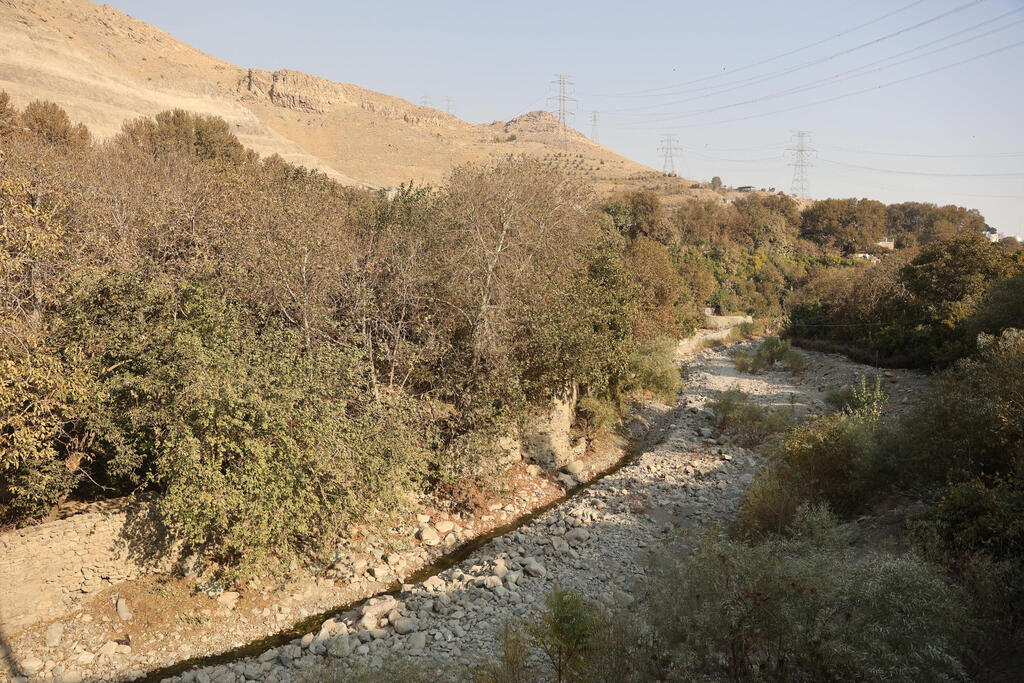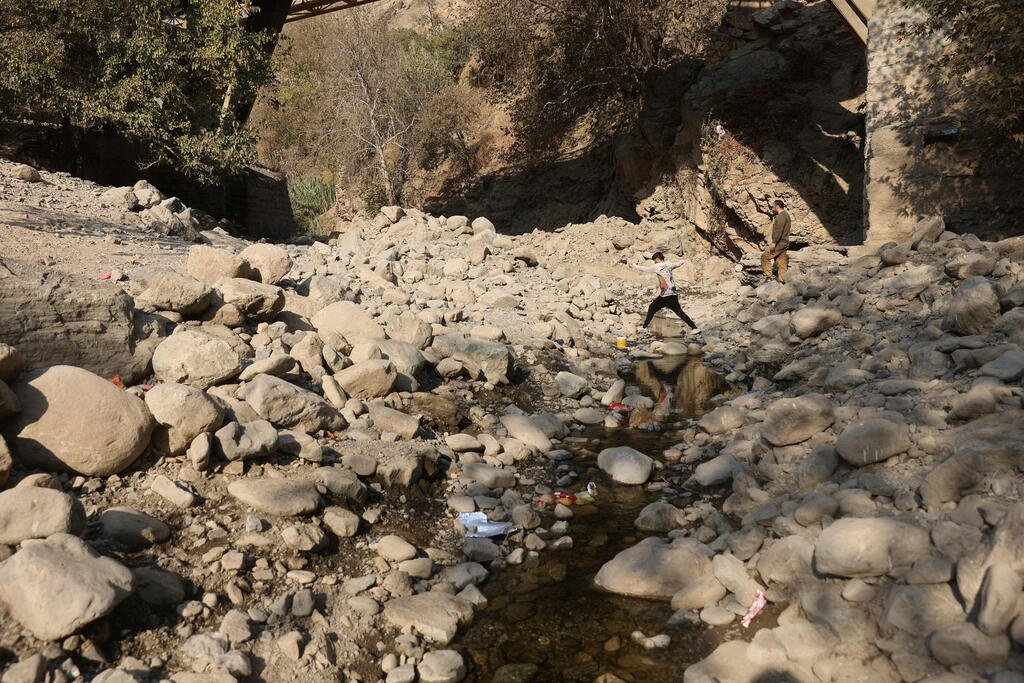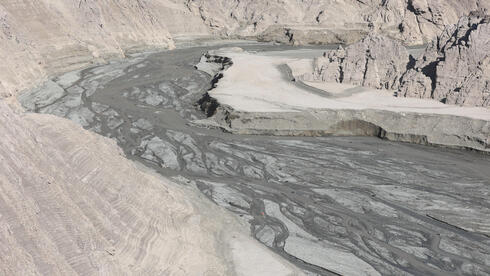Iran is grappling with its worst water crisis in decades, with officials warning that Tehran — a city of more than 10 million — may soon be uninhabitable if the drought gripping the country continues.
President Masoud Pezeshkian has cautioned that if rainfall does not arrive by December, the government must start rationing water in Tehran.
8 View gallery


Iranian President Masoud Pezeshkian
(Photo: AP Photo/Angelina Katsanis)
“Even if we do ration and it still does not rain, then we will have no water at all. They (citizens) have to evacuate Tehran,” Pezeshkian said on November 6.
The stakes are high for Iran’s clerical rulers. In 2021, water shortages sparked violent protests in the southern Khuzestan province. Sporadic protests also broke out in 2018, with farmers in particular accusing the government of water mismanagement.
The water crisis in Iran after a scorching hot summer is not solely the result of low rainfall.
Decades of mismanagement, including overbuilding of dams, illegal well drilling, and inefficient agricultural practices, have depleted reserves, dozens of critics and water experts have told state media in the past days as the crisis dominates the airwaves with panel discussions and debates.
Pezeshkian’s government has blamed the crisis on various factors such as the “policies of past governments, climate change and over-consumption”.
8 View gallery


Low water pressure from the tap in a Tehran home
(Photo: Majid Asgaripour/WANA (West Asia News Agency) via REUTERS)
While there has been no sign of protests yet this time over the water crisis, Iranians are already struggling under the weight of a crippled economy, chiefly because of sanctions linked to the country’s disputed nuclear programme.
Coping with persistent water shortages strains families and communities even further, intensifying the potential for unrest, when the clerical establishment is already facing international pressure over its nuclear ambitions. Iran denies seeking nuclear weapons.
Across Iran, from the capital’s high-rise apartments to cities and small towns, the water crisis is taking hold.
When the taps went dry in her eastern Tehran apartment last week, Mahnaz had no warning and no backup.
“It was around 10 p.m., and the water didn’t come back until 6 a.m.,” she said. With no pump or storage, she and her two children were forced to wait, brushing teeth and washing hands with bottled water.
8 View gallery


Iranians are buying water storage containers as the regime offers only temporary solutions
(Photo: Majid Asgaripour/WANA (West Asia News Agency) via REUTERS)
8 View gallery


(Photo: Majid Asgaripour/WANA (West Asia News Agency) via REUTERS)
Iran’s National Water and Wastewater Company has dismissed reports of formal rationing in Tehran, but confirmed that nightly water pressure reductions were being applied in Tehran and could drop to zero in some districts, state media reported.
Pezeshkian also warned against over-consumption in July. The water authorities said at the time 70% of Tehran residents consumed more than the standard 130 litres a day.
Iranians have endured recurrent electricity, gas and water shortages during peak demand months in the past years.
“It’s one hardship after another — one day there’s no water, the next there’s no electricity. We don’t even have enough money to live. This is because of poor management,” said schoolteacher and mother of three Shahla, 41, by phone from central Tehran.
8 View gallery


Amir Kabir Dam at just 8% of capacity
(Photo: Majid Asgaripour/WANA (West Asia News Agency) via REUTERS)
Last week, state media quoted Mohammadreza Kavianpour, head of Iran’s Water Research Institute, as saying that last year’s rainfall was 40% below the 57-year average in Iran and forecasts predict a continuation of dry conditions toward the end of December.
The capital depends entirely on five reservoirs fed from rivers outside the city. But inflow has plummeted. Behzad Parsa, head of Tehran’s Regional Water Company, said last week that water levels had fallen 43% from last year, leaving the Amir Kabir Dam at just 14 million cubic meters — 8% of capacity.
He said Tehran’s reservoirs, which collectively could once store nearly 500 million cubic meters, now hold barely 250 million, a drop of nearly half, which at current consumption rates, could run dry within two weeks.
The crisis extends far beyond Tehran. Nationwide, 19 major dams — roughly 10% of Iran’s total — have effectively run dry. In the holy Shi’ite city of Mashhad, Iran’s second-largest city, with a population of 4 million, water reserves have plunged below 3%.
8 View gallery


Kan Creek in Tehran
(Photo: Majid Asgaripour/WANA (West Asia News Agency) via REUTERS)
8 View gallery


Kan Creek in Tehran
(Photo: Majid Asgaripour/WANA (West Asia News Agency) via REUTERS)
“The pressure is so low that literally we do not have water during the day. I have installed water tanks but how long we can continue like this? It is completely because of the mismanagement,” said Reza, 53, in Mashhad. He said it was also affecting his carpet-cleaning business.
Like the others Reuters spoke to, he declined to give his family name.
The crisis follows record-breaking temperatures and rolling power outages. In July and August, the government declared emergency public holidays to reduce water and energy consumption, shutting down some public buildings and banks as temperatures topped 50 degrees Celsius (122 degrees Fahrenheit) in some areas.
Climate change has intensified the problem, authorities say, with rising temperatures accelerating evaporation and groundwater loss.
Some newspapers have criticized the government’s environmental policies, citing the appointment of unqualified managers and the politicization of resource management. The government has rejected the claims.
8 View gallery


Tehran
(Photo: ATTA KENARE / AFP)
Calls for divine intervention have also resurfaced.
“In the past, people would go out to the desert to pray for rain,” said Mehdi Chamran, head of Tehran’s City Council, state media reported. “Perhaps we should not neglect that tradition.”
Authorities are taking temporary measures to conserve what remains, including decreasing the water pressure in some areas and transferring water to Tehran from other reservoirs.
But these are stopgap measures, and the public has been urged to install storage tanks, pumps, and other devices to avoid major disruption.
“Too little, too late. They only promise but we see no action,” said a university teacher in the city of Isfahan, who asked not to be named. “Most of these ideas are not doable.”

